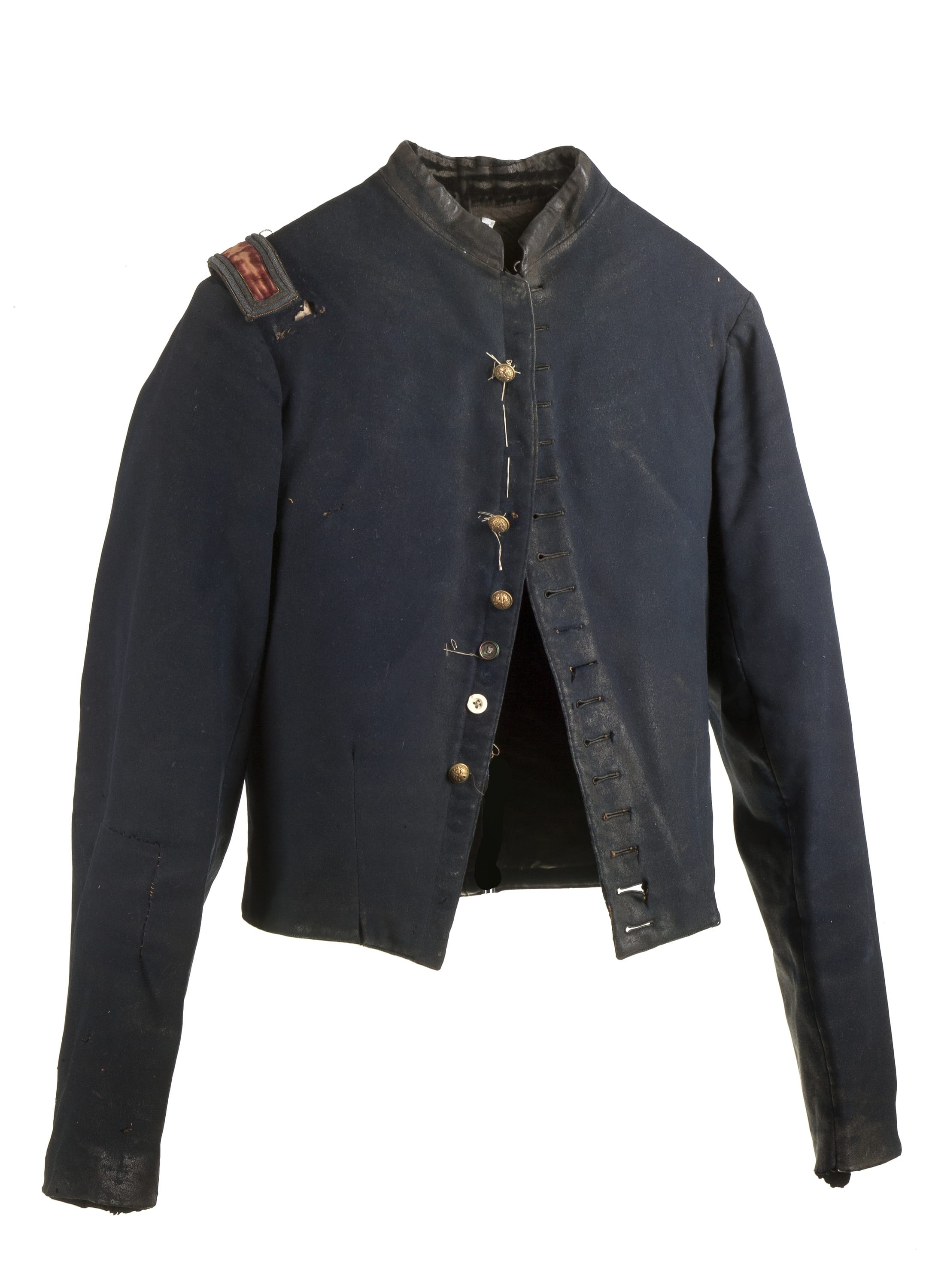NEW YORK — An exhibit of quilts, clothing, uniforms and other Civil War-era textiles reveals a complicated and heart-wrenching time.
“Each rip and stain in the clothing tells a story,” said Margi Hofer, curator of decorative arts at the New-York Historical Society, where the show runs through Aug. 24. “And the remarkably well-preserved quilts, some wrapped and safely buried during the war, reveal what treasured artifacts they were.”
The exhibit, “Homefront and Battlefield: Quilts and Context in the Civil War,” was organized by the American Textile History Museum in Lowell, Mass.
It “lures you in with pretty quilts and then hits you over the head with history,” said Hofer.
In addition to quilts by Southerners, Northerners and slaves, the show features clothing, uniforms, period images and artifacts, including the noose and scaffold hook said to have been used in the hanging of abolitionist John Brown, and a post-Reconstruction Ku Klux Klan hood from Vermont.
The exhibit begins with an enormous bale of cotton alongside a picking basket.
“The thread that runs throughout the exhibit is cotton, which the organizers argue was a leading cause of the Civil War,” Hofer said.
The cotton, picked by slaves, flowed north to mills, and then textiles flowed back south. That traffic, and the personal stories and emotions told by the quilts and clothing, blur the Mason-Dixon line in this exhibit, adding depth to a story often presented as neatly split between two warring sides.
There are samples of the rough fabrics used to clothe millions of slaves. Quaker and abolitionist Isaac P. Hazard of Rhode Island, who nevertheless earned his living producing slave cloth, sent the samples to a slave-owning client in the South. Rhode Island led the country in 1860 in slave-cloth production, Hofer said.
A quilt made of hand-spun linen and wool by three sisters enslaved by the Bushong family of Stony Point, Tenn., was used by the slaves for years before it passed into the family that had owned them. The Bushongs carefully preserved it.
Many of the textiles are deeply political.
A “free labor” movement in the North rejected any clothing derived from slave labor; a somber “free labor” dress from Vermont is of a brown wool-silk blend lined in calico.
Nearby is a flag made in Lowell, Mass., immediately after 1865 legislation requiring that U.S. flags be made from textiles produced in America. It was presented to Lincoln days before his assassination.
But the quilts are what steal the show.
“Women could not vote or be soldiers, but they expressed their political views and contributed to the war effort through quilts,” Hofer explained.
Quilts — some made by whole communities — were lovingly assembled, stitched, stamped with a government seal and distributed to troops. Some featured encouraging phrases or poems: “Brave soldier thou will ever be remembered,” says an inscription on a community-made quilt from Yates, N.Y..
On the Confederate side, “gunboat societies” auctioned quilts to earn money toward a warship. An 1862 applique quilt from Greensboro, Ala., by a widow with two sons fighting on the Confederate side was auctioned off three times, raising over $865 for the war.
Not all the quilters were women. An 1865 quilt was made from woolen blanket and uniform fabrics by an Ohio sergeant wounded at Franklin, Tennessee; he was captured and narrowly escaped, stitching the quilt while recovering at a Union hospital in Louisville, Ken.
The exhibit ends with a bright and exuberant 1867 “Reconciliation Quilt” by Lucinda Ward Honstain of Brooklyn, N.Y. Blocks include a black man addressing a white man on horseback, saying, “Master I am Free.” Another shows Confederate President Jefferson Davis alongside a woman holding an American flag, and others show Honstain’s house and her husband and son in uniform.



